3 The Americas and Columbus
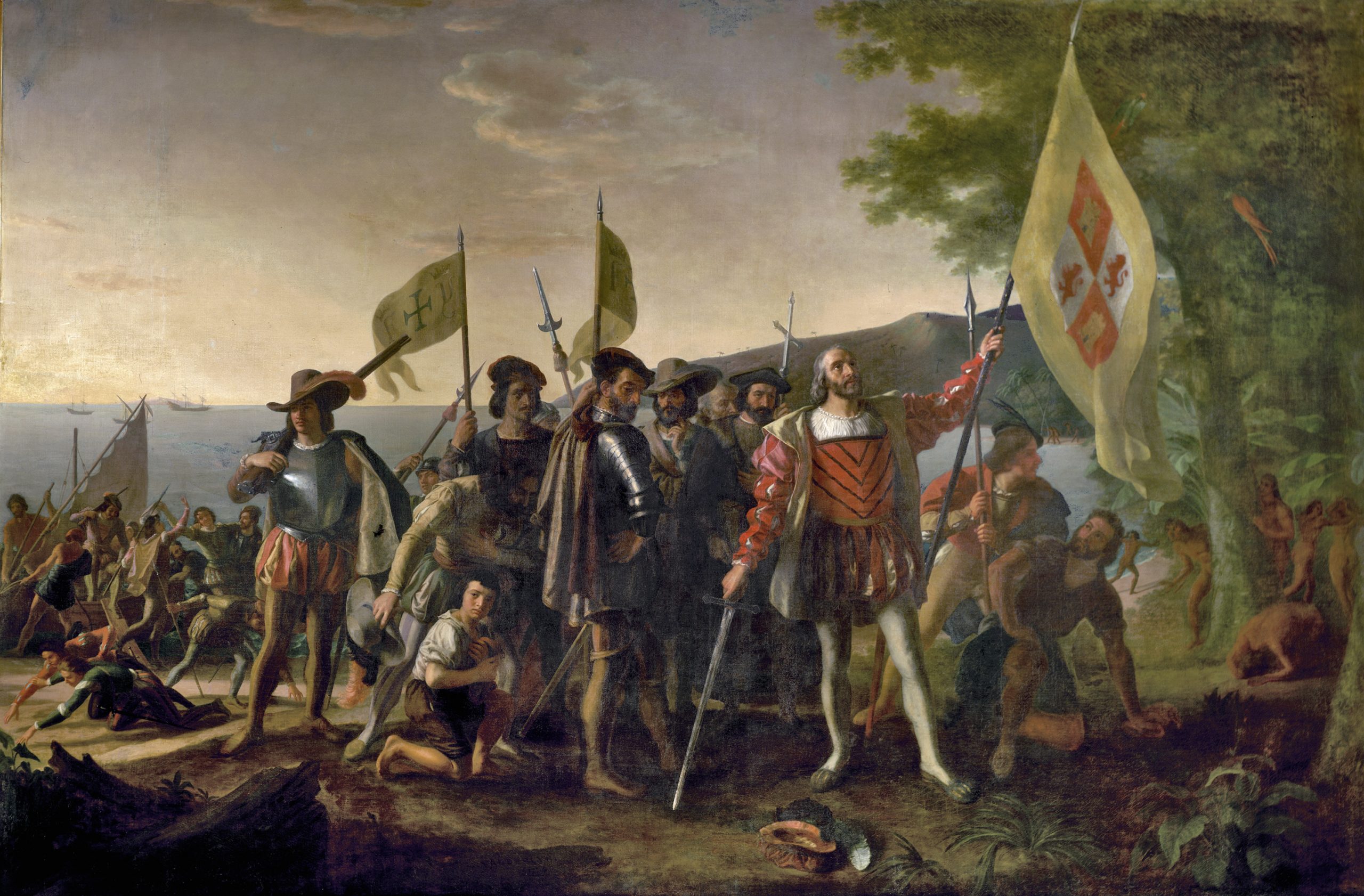
Up until recently (and sometimes still today), in many high school and college classrooms, Modern World History and U.S. History usually began in 1492, with the Italian Cristoforo Colon’s [Christopher Columbus] “discovery” of America. Even today, typical histories of America tend to consider the moment of Columbus’ landing on October 12, 1492, to be a significant turning point. Some continue to consider Columbus a heroic explorer while others regard him as a monster and accuse him of deliberate genocide. European contact with the Americas was a momentous event, but the story is a bit more complicated than it is usually depicted. This chapter will add detail to the traditional stories of the conquest and colonization of the “New World.”

One of the most important things to know is that in 1500, the populations of Europe, Africa, and the Americas were quite similar. European and Asian populations had substantially recovered from the plagues of the previous two centuries and were on the rise. Continental Asia dominated. China led the world with 125 million people, followed by India with about 90 million. Europe and Africa had about 80 million each, and the Americas probably had a total population of around 65 million. It’s important to understand that on the eve of Europe’s encounter with the Americas, their populations were very similar. This demographic parity changed very quickly, as we will soon see.
The people living in the Americas had been separated from Eurasia for nearly 12,000 years, since the end of the Ice Age. During this period, Native Americans experienced their own agricultural revolution around the same time as Africans and Eurasians, but instead of domesticating cattle, horses, sheep, goats, pigs, and chickens–which were not native to the Americas–they developed certain plants, creating three of the world’s current top five staple crops: corn, potatoes, and cassava, as well as additional plants such as hot peppers, tomatoes, beans, cocoa, and tobacco.
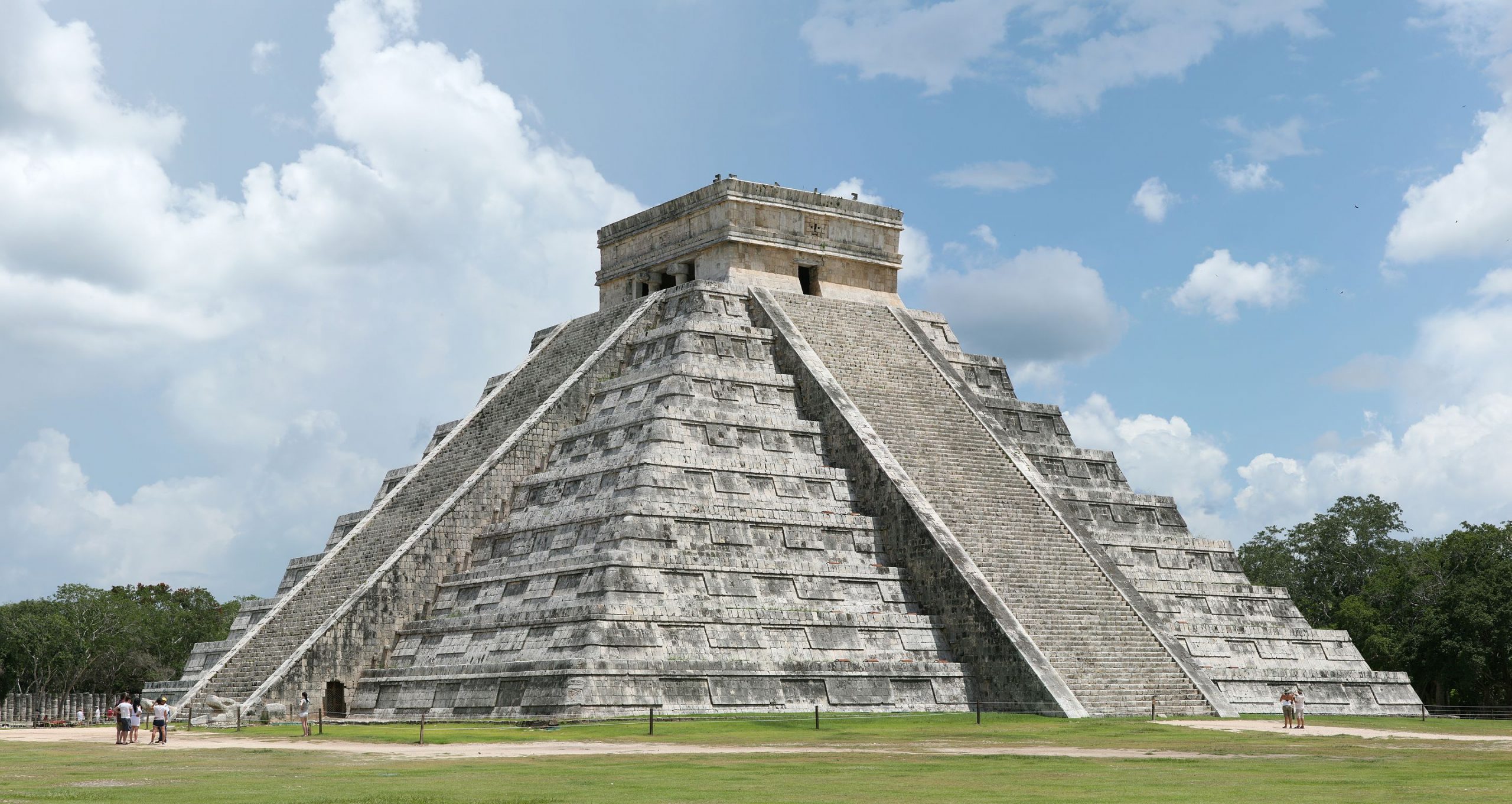
Reliable, storable, staple food supplies are a necessary precondition for long-term settlement and population growth – in other words the creation of cities. Like the Europeans, Africans, and Asians, once they had created a reliable food supply, American natives built remarkable cities, especially in Central and South America. From present-day Mexico’s Yucatan Peninsula south through Guatemala, the Maya developed a complex society which reached its most intense flourishing during their “Classic Period” (250 CE-900 CE). However, by the time the Spanish arrived, the Maya were living in more separated independent city-states, seemingly having abandoned some of their more impressive temples and structures such as Chichén Itzá in Yucatan. This led to an interpretation that the original society suffered a partial collapse sometime around 900 CE due to feuding among these separate cities.
However, more extensive surveying using recently developed laser technology has revealed that the city-states were never that separate during the Classic Period—there are new structures and buildings that are revealed through this new research, showing that the Mayan area was probably more populated than previously calculated. To support such a population, the Maya used raised irrigated fields, creating canals—and again, more recent research has revealed that they bred a certain kind of fish to use as fertilizer, in addition to water plants and algae. In mountainous areas, the Maya terraced the hillsides to provide flat areas for planting.
Religion and governance intertwined in Maya society, and stories of gods and goddesses were fundamental in the building of temples and determining the best times for planting and harvest. Corn and the god related to corn were the principal concern for Maya religion and society. To record their beliefs and run their complex society, the Maya developed a written language based on 800 hieroglyphs that represented different syllables. They also developed a base-20 number system that included “zero” centuries before the concept was introduced into Western Europe. The preciseness of Maya mathematics, along with the importance of the stars and planets to their religious beliefs, allowed the Maya to be more advanced than the Europeans in astronomy and to develop a more exact calendar.
Mayan religious beliefs included scraping down and redecorating their temples every sixty years. One famous carved calendar used to calculate the precise time for this renovation and other key ceremonies ended on December 21, 2012, leading many to believe that the Maya had predicted the end of the world. In reality, it seems that the astronomers had simply run out of room on that particular calendar.
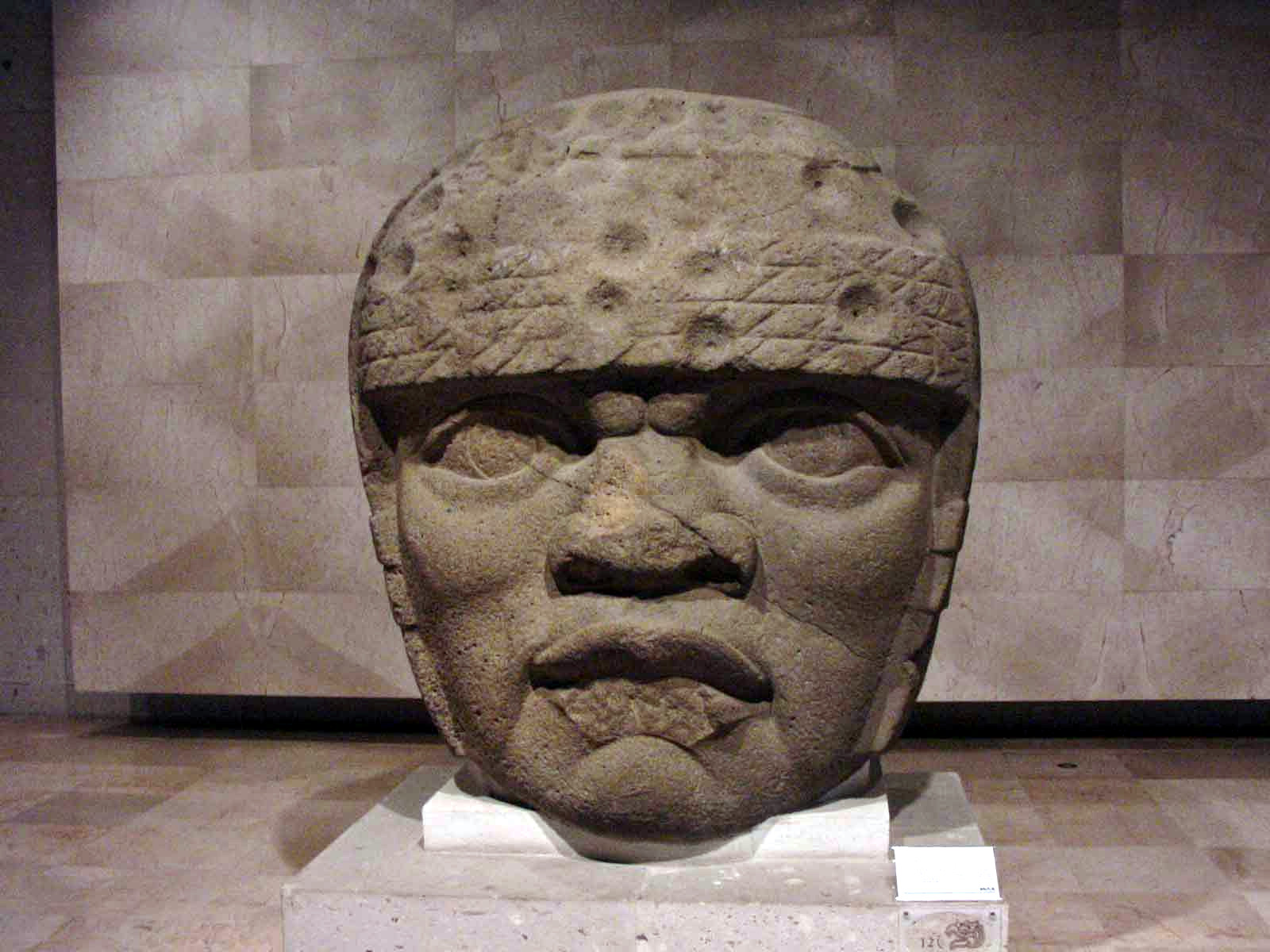
Farther north in today’s Mexico, the Olmecs were among the first to form a complex society–they carved impressive statues including large stone heads some 3,000 years ago. Another society built the structures of Teotihuacan between 100 BCE and 750 CE. The nearby twin Mexica Triple Alliance capitals of Tenochtitlán and Texcoco, built in the 1320s in the Valley of Mexico, each had more than 200,000 inhabitants when they were first encountered by the Spanish, making them as large as Paris and Milan, Europe’s most populous cities at the time. Tenochtitlán was built on an island in Lake Texcoco and was connected to the lakeshore by a series of causeways.
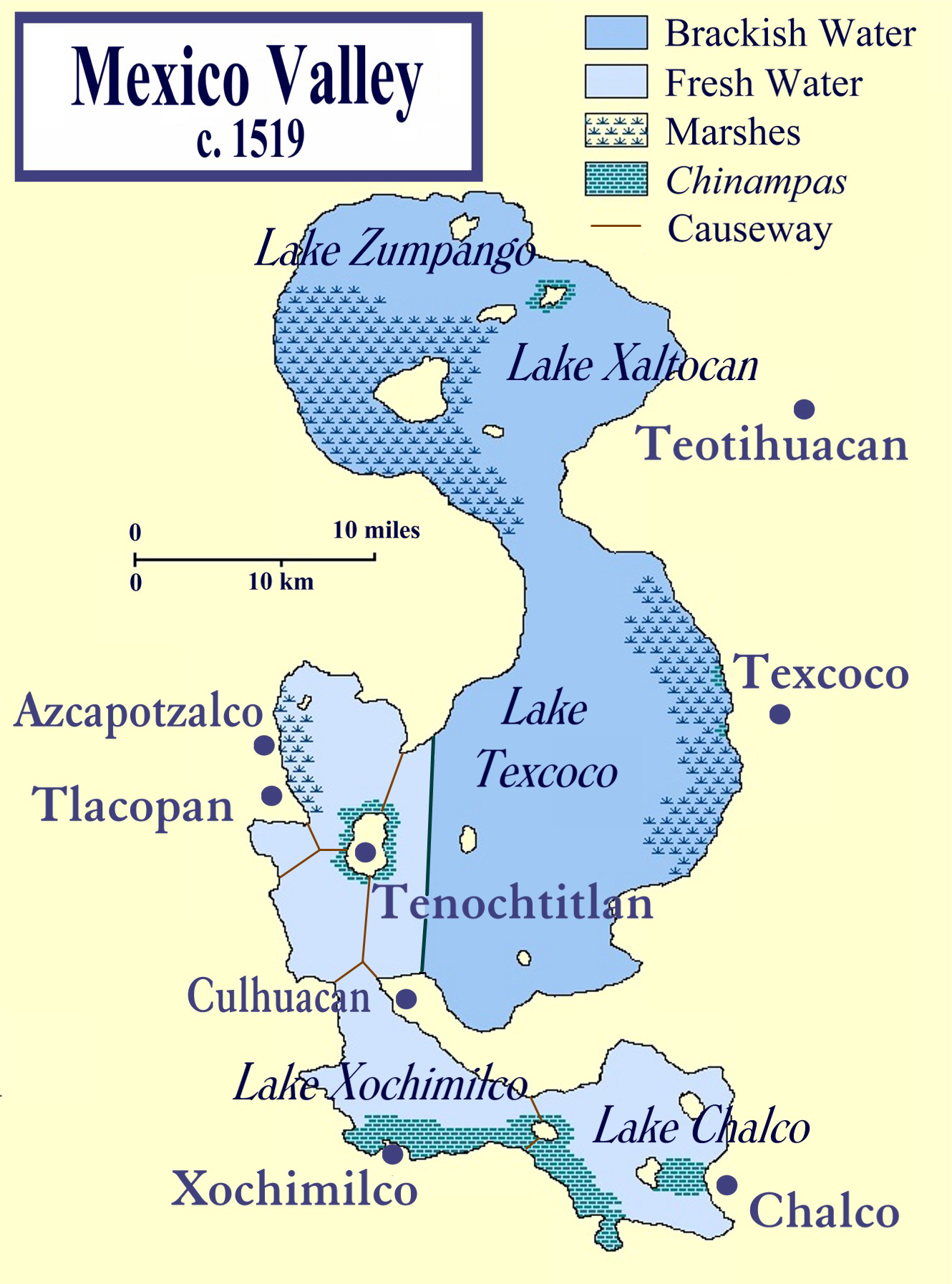
The urban Aztecs had a lot of people to feed. They surrounded their island capital of Tenochtitlán with raised planting-beds called chinampas on floating platforms in Lake Texcoco. This technique allowed Aztec farmers to carefully control soil fertility and watering. The Aztecs were so concerned about the quality of the water, they created a dike across the lake that separated the fresh water around their city from the brackish water of the main lake to the east; and they drank water brought into the city via an aqueduct from springs in the hills overlooking the lake. The Aztecs supported six people per acre using chinampas in the fifteenth century. By comparison, Chinese intensive rice farming, the most successful agricultural technique known in Europe and Asia, supported only about one person per acre at the same time.
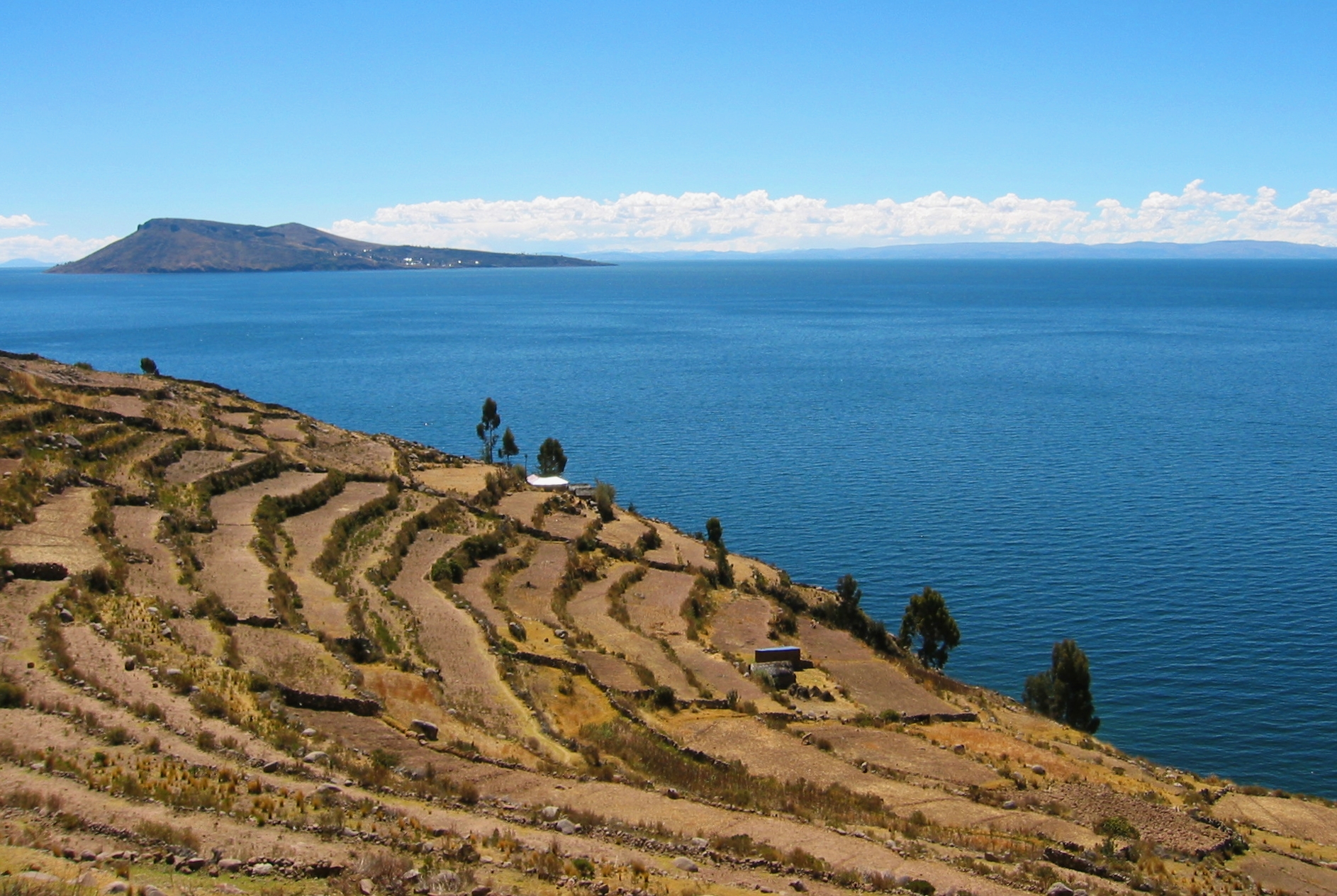
Tiwanaku, located near the shores of Lake Titicaca in what are now the Bolivian highlands, was built about 3,500 years ago. Its 30,000 inhabitants developed a farming technique called flooded-raised field agriculture and covered the hills around the lake with walled terraces. Centuries later, the Incas maintained and expanded by thousands of square miles these terraced farms throughout the Andes to achieve a level of agricultural production similar to the Aztecs. For example, surrounding Lake Titicaca in Bolivia there were terraces rising from the lakeside elevation of 12,500 feet (nearly 3,700 meters). Dotting the eastern slopes of the Andes were cities like the Inca capital at Cusco and its nearby towns and villages, which were also surrounded by terraced farms, many of which are still in use today. These terraces were not only built and irrigated by hand at extremely high altitudes, but guano from coastal islands hundreds of miles away was carried in via well-built Inca roads to fertilize the Andean farms. Many of these native cities have been hidden and their buildings and terraces torn apart by rainforest trees over the last five centuries. Machu Picchu, a smaller settlement located on a mountain peak about sixty miles from Cusco, was only encountered by Westerners in 1911. The fact that it had been undiscovered by the Spanish provided a clearer picture of how the Inca had organized their settlements, with terraces for agriculture and buildings made of seamless stonework using large blocks of carved rock—far superior to most European masonry at the time.
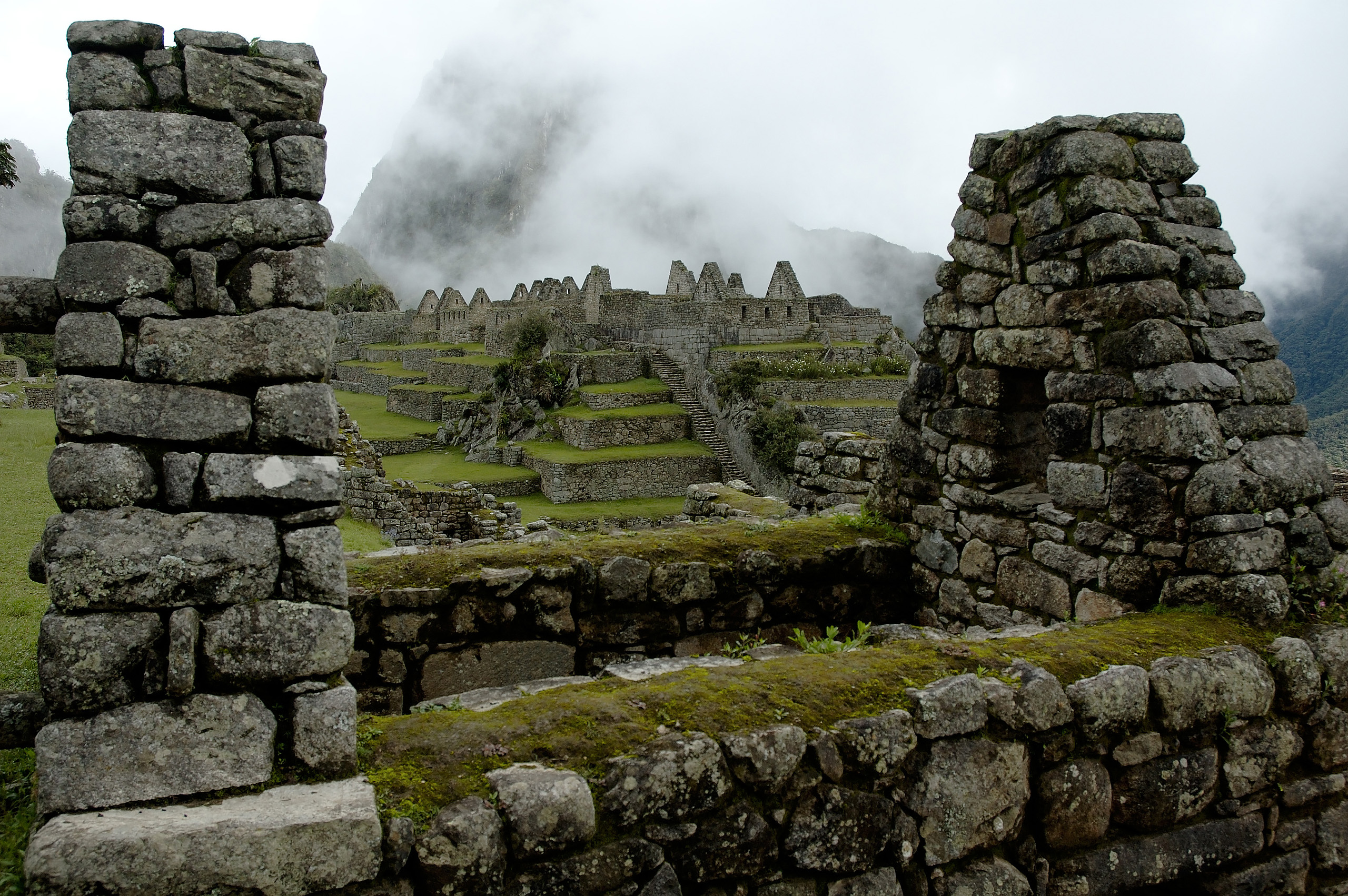
Complex societies in the Americas were not restricted to just the Aztec, Maya, and Inca. In Colombia there is evidence of large ceremonial cities built in the northern highlands near the Caribbean Coast before the arrival of the Spanish, while other indigenous groups built complex irrigation systems in the lowlands just off the Caribbean Coast. The Muisca in the eastern highlands of present-day Colombia, settled at a high altitude, around 8000 feet (2600 meters) above sea level. They cultivated corn and quinoa on the extensive flatland valleys between the mountains, controlled extensive salt deposits, and traded salt for gold, emeralds, fruits and other lowland products with neighboring indigenous groups. Their architecture was impressive, but built with massive tree trunks rather than stone, so that no examples survived the Spanish conquest.
The Muisca did not develop a writing system like the Maya and Aztecs, but maintained religious rituals and beliefs focused on ancestor worship and the sacredness of their kings. Each year, at a round ceremonial lake outside of present-day Bogotá, the Muisca king powdered himself in gold dust and dove into the waters as a purification rite for the gods. This practice is the origin of the myth of El Dorado, the “Golden Man,” sought by the Spanish in their early explorations. Over time, Spaniards such as Coronado came to believe they were searching for a city of gold, which they never found.
The natives of North America also settled in complex societies in various regions, based mainly on the cultivation of corn, wild rice, squash, and pumpkins and on managing the environment to promote the success of game animals. The traditional U.S. and Canadian Thanksgiving dinner celebrates the native foods of North America, including the turkey. Along the Mississippi River and its tributaries, indigenous people lived mostly in villages but occasionally gathered into cities and built mounds like those found at Cahokia. The Algonquian and Iroquois were semi-sedentary, living throughout what is now upstate New York and southern Quebec and Ontario. By the time of contact with Europeans, the Iroquois had formed a confederacy of five major tribes. The Ojibwe and Dakota were also semi-sedentary, living in settlements in the western Great Lakes region and on the edge of the northern Great Plains. By the time of contact with the Europeans, the Dakota dominated the Plains, where they took advantage of the large herds of buffalo as a source of protein, clothing, and housing, while gathering wild rice and cultivating corn and squash for carbohydrates. Many North American forest-dwellers also developed the sap of the maple tree as a key source of sugar.
Of course, all this agriculture and city-building and civilization was happening in the Americas without anyone in Europe, Asia, or Africa knowing about it. Although it is NOT true that everybody believed the world was flat until Columbus came along, some Europeans were unclear on the actual size of the Earth, the existence of American continents and the Pacific Ocean. But not all Europeans were unaware there was something valuable across the Atlantic. It’s important to realize that European exploration did not BEGIN with Columbus. Around 1000 CE, five hundred years before the Italian explorer set out to discover a new trade route to Asia for Spain, Norse explorers from Europe and Iceland had established a presence on Greenland. The Greenland colony lasted four hundred years and was a base for exploration and settlement even further west. Leif Erikson, son of the Greenland colony’s leader Erik the Red, began a colony in what is now northern Newfoundland. For a long time, historians thought Scandinavian claims about a North American colony called Vinland were just patriotic folktales. But in 1978, archaeologists discovered a site called L’Anse aux Meadows that dates to about 1000 CE. The settlement was more than just a fishing camp: the eight buildings include a blacksmith shop and a spinning room including artifacts that suggest women lived there and wove cloth for their families.

The Little Ice Age was a period of global cooling that hit the North Atlantic particularly hard beginning around the 1430s. Sailing became increasingly dangerous and as the agricultural season was cut short by longer and more severe winters, the Greenland colony was abandoned in the early 1400s, and without a base in Greenland the Vikings were unable to sustain a North American colony. They also faced strenuous opposition from natives they called Skraelings, who according to the Viking sagas were fierce warriors. This map made in Iceland in 1570 identifies the area at the latitude of Newfoundland as Skralinge Land. North of that is Markland (land of forests) and Helleland (land of flat stones), then Greenland. And on a more recent map of Greenland, from 1747, you can see the names of old Viking settlements as well as a channel it was believed had once cut through the island. The text on the map reads, “It is said that these streights [sic] were formerly passable, but now they are shut up with ice.” On both sides of Greenland, the map says “The Coast is for the most part inaccessible by reason of floating and fixed mountains of ice.”

Textbooks tend to stress European desire for gold and silver, and finding precious metals was very important to explorers like the conquistadors. But we shouldn’t underestimate Europeans’ fear of famine, especially during the Little Ice Age. Even before Columbus’s voyage, Basque and Portuguese fishermen were regularly visiting the Grand Banks off the coast of Newfoundland to catch cod. A 1497 account by Giovanni Caboto (another Italian explorer who anglicized his name to John Cabot) claimed cod were so plentiful on the coast of North America that European fishermen could almost walk from ship to ship on their backs. Salted cod is still an important element of traditional Portuguese cuisine, although nowadays they get their fish from Norway. The fisheries were originally a closely-guarded trade secret, but by the time Columbus made his famous journey they were well-known – and since cod was usually dried on racks onshore before being carried back to Europe, Columbus and his crew were probably not the first Europeans to make landfall in the Americas after the Viking settlements had been abandoned.
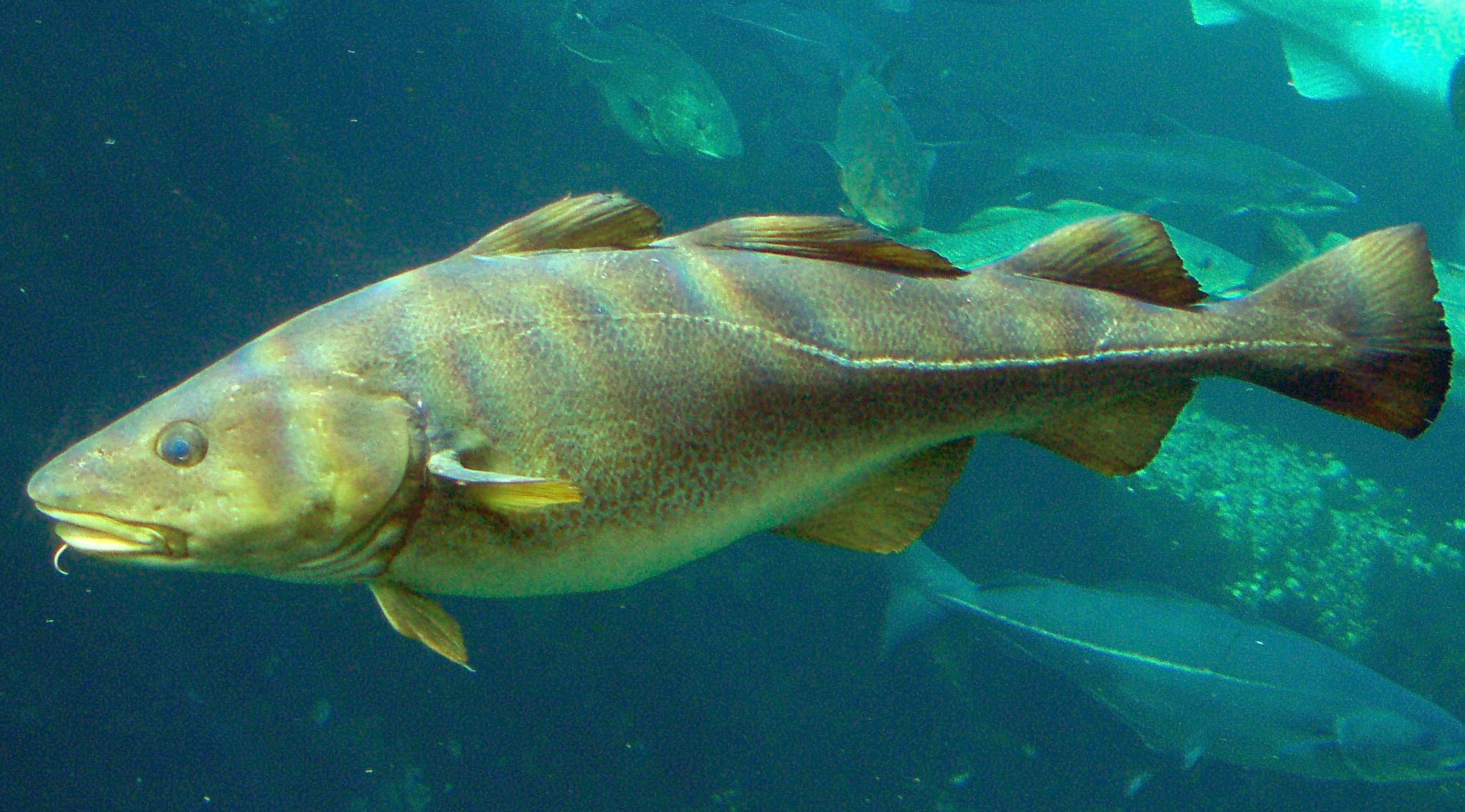
Columbus’s promise to find a sea-route to Asia interested European monarchs like Ferdinand and Isabella because land-based trade routes to Asia were becoming more difficult and expensive. The collapse of the Mongol Empire at the end of the thirteenth century and the plagues of the fourteenth century increased the perceived danger of overland travel. Columbus had failed to interest Portugal in his proposal, because Bartolomeu Dias had already discovered a route to Asia around the bottom of Africa. On the other hand, Spain had recently unified with the marriage of King Ferdinand of Aragon and Queen Isabella of Castille, and the monarchs had just completed the Reconquista and ejected Muslims from Granada, their last kingdom on the Iberian peninsula.
It is worth considering that as they turned their interests outward, the Spanish had been at war for nearly 800 years. Their war on behalf of religion and glory would continue in the New World. It’s also worth noting that the inventions that sparked this new era of exploration and empire building, like the sternpost rudder, the compass, gunpowder, and the printing press, were all Chinese inventions that found their way to Europe over an already-existing international trade network dominated by Arab merchants, which was about to become truly global with the European encounter of the Americas.
Columbus arrived in the Caribbean on October 12, 1492, and explored until late December. His flagship, the Santa Maria, ran aground on Hispaniola on December 25 and had to be abandoned. With permission of the local chief, Columbus left 39 sailors behind in a settlement he named La Navidad. He returned to Europe with two ships, a few captive Taino natives, some gold, and specimens of New World species including turkeys, pineapple, and tobacco. Arriving in Barcelona in mid-March, Columbus was celebrated as a hero.
It is often mentioned that Columbus believed he had reached Asia, and he did make that claim in his extravagant “Letter on the First Voyage.” But this document was the explorer’s report to his royal sponsors, and Columbus wanted very badly to be sent back again. Columbus wrote “Hispaniola is a miracle…both fertile and beautiful…the harbors are unbelievably good and there are many wide rivers the majority of which contain gold.” Whether or not Columbus understood he was reporting on lands previously unknown to Europeans, he definitely got his readers excited about the places he had visited.
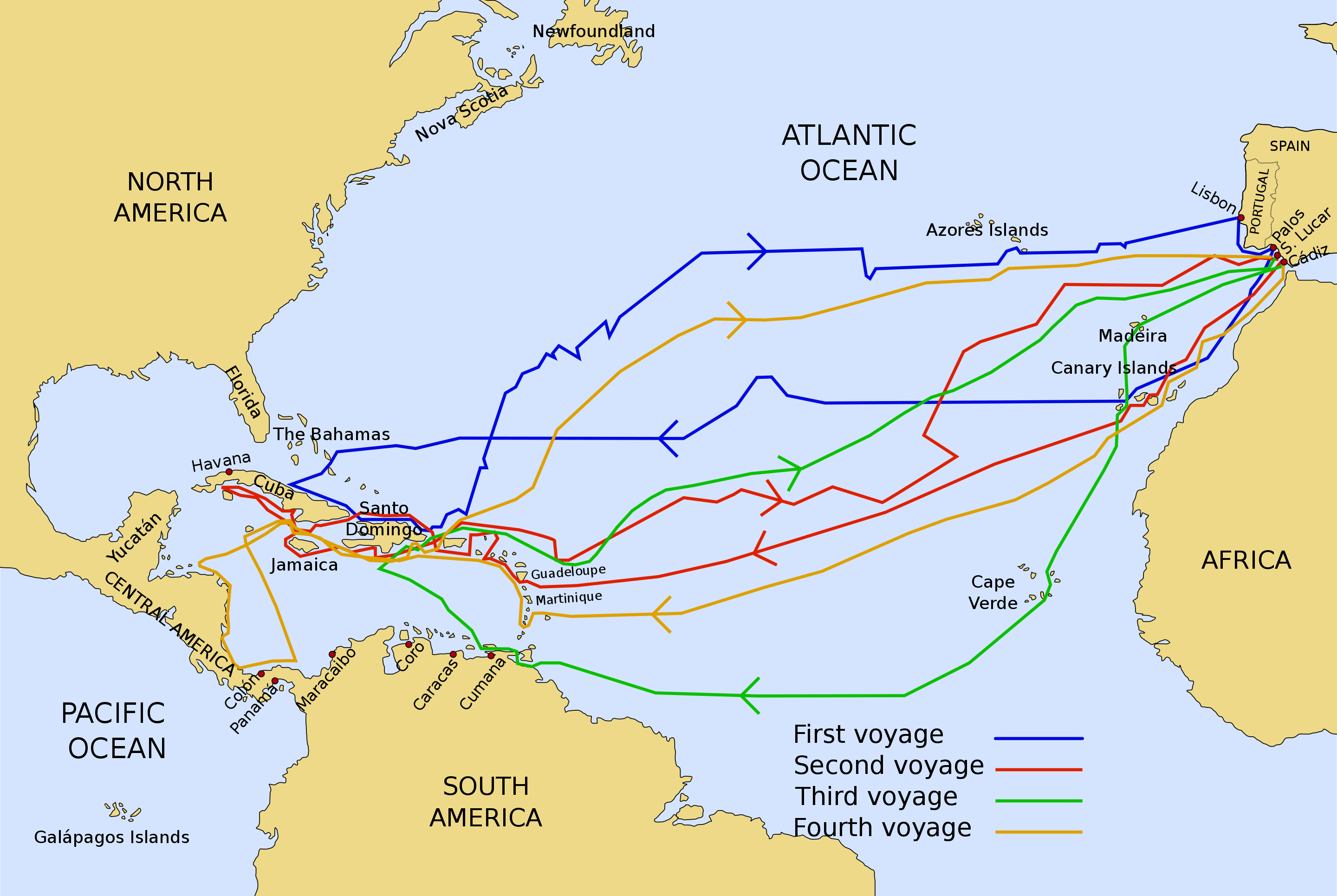
When other European explorers reached America they were equally amazed. People throughout Europe read exciting traveler’s accounts like Amerigo Vespucci’s 1504 best-seller, Mundus Novus, which actually coined the term New World and made it clear for anyone who might still be confused, that these lands were not Asia but a previously unknown continent. Like Columbus, the explorers carried back to Europe not only eyewitness accounts of wealthy civilizations, but samples of native plants, animals, and captive people.
Columbus returned to the Caribbean in 1493 with 17 ships, 1,200 men, and according to his diaries, “seeds and cuttings for the planting of wheat, chickpeas, melons, onions, radishes, salad greens, grape vines, sugar cane, and fruit stones for the founding of orchards.” Other old-world crops that thrived in the Americas included coffee and bananas, originally cultivated in Africa and Asia, which were brought from the Canary Islands in 1516. The Spanish had introduced sugar cultivation to the Canary Islands in the early fifteenth century, and transplanted canes to the tropical paradise their explorers had discovered across the Atlantic.
Cattle were delivered to Spanish conquistadors in Mexico in 1521. Most of the significant Eurasian species brought to the Americas by European explorers and colonists were introduced by the Spanish by the early 1500s, long before North American settlement began. Even species like the wild horses of the American West that would transform Plains Indian culture in the eighteenth and nineteenth centuries were the descendants of escapees from the herds of the conquistadors. The Americas had very few large mammal species, and most could not be domesticated. Nearly all the species humans have successfully domesticated, the familiar residents of the modern farmyard, originated in Europe and Asia. These include goats, sheep, cows, horses, pigs and chickens.
The Spanish and Portuguese dominated the first century of exploration, conquest and colonization in the Americas for many reasons. Spain and Portugal had an eight-century long tradition of warfare from fighting the Reconquista against the Moors, and were prepared for further battle for glory and religion. The Portuguese also had a maritime tradition, which was how Columbus learned his trade. But the two Catholic nations also had a papal charter. The Spanish and Portuguese were granted a license by the Pope under the 1494 Treaty of Tordesillas, which awarded all the territory east of the 47th meridian to Portugal and everything west of it to Spain. The Pope (Alexander VI) who made this deal was a Spaniard named Rodrigo Borja – his reign was known for nepotism and corruption, and, despite a pledge of clerical celibacy, he was the father of the famous Italian political family known for poisoning their enemies, the Borgias. The Portuguese received the east, because they were already establishing colonies on the east and west coasts of Africa. The Spanish were assigned the unknown west, which turned out to be bigger than anyone had expected. The Pope granted nothing to any other European kingdom. This type of corruption at the Vatican helped motivate reformers like Martin Luther toward what became the Protestant Reformation.
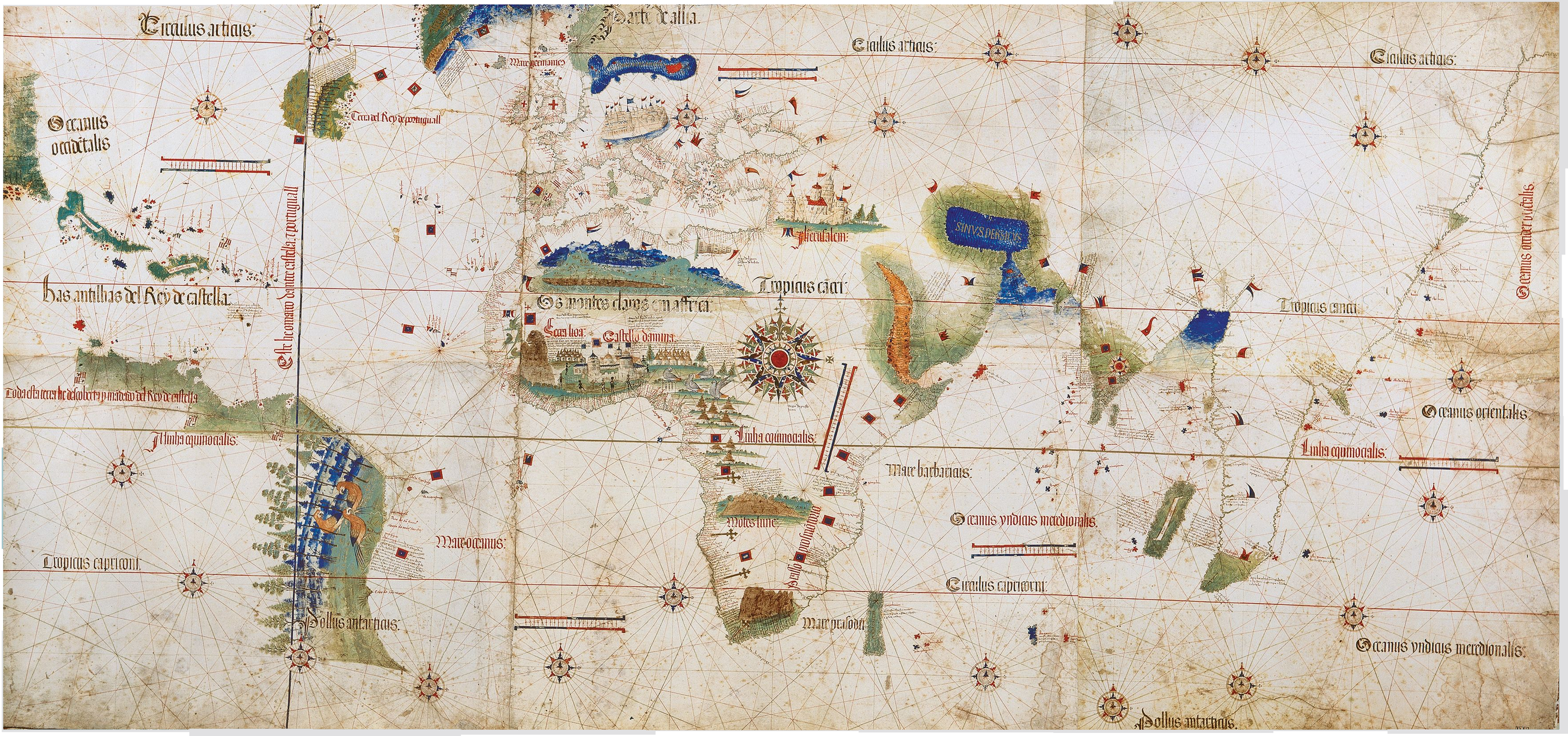
The Columbian Exchange
Historians call the transfer of plants and animals that began with the encounter between Europe and the Americas after 1492 the Columbian Exchange. The directions of these biological transfers and their effects on the environments and people of Europe and the Americas shaped the modern world we live in. American maize, potatoes, and cassava fed growing European, African, and Asian populations, allowing the building of new cities and industries. European animals such as pigs, sheep, chickens, and cattle thrived in the Americas, enabling both Native Americans and Europeans there to add and maintain animal protein to their diets and eventually expand their populations. But before most of the indigenous had a chance to benefit from the new food sources introduced by Europeans, they were struck down by the largely accidental transfer of viruses and bacteria from Europe to America, which caused the deaths of at least 90% of the native American population.
When prehistoric Eurasians began living in close contact with the species they domesticated, the people were affected almost as much as the animals they kept. Most of humanity’s major diseases originated in animals and crossed from domesticated species to their human keepers. Whooping cough and influenza came from pigs; measles and smallpox from cattle; malaria and avian flu from chickens. The people who domesticated these species and lived with the animals for generations co-evolved with them. Animal diseases became survivable when people developed antibodies and immunity. Without the inherited protection enjoyed by most Eurasians and Africans, even a routine childhood disease such as chickenpox was initially devastating for Native Americans, who did not have domesticated animals and thus little acquired immunity to these diseases.
The introduction of a disease into an area without inherited immunity is called a virgin soil epidemic. Such epidemics had happened in Eurasia, when the Romans spread smallpox into the populations they conquered, and in Europe when the expanding Mongols introduced bubonic plague, the Black Death that killed probably half the population of Europe in the fourteenth century, reducing world population by about a hundred million. Virgin soil epidemics spread across the Americas when explorers and colonists introduced Eurasian diseases to the Native Americans. The Eurasian diseases that attacked native populations included smallpox, measles, chickenpox, influenza, typhus, cholera, typhoid, diphtheria, bubonic plague, scarlet fever, whooping cough, and malaria.
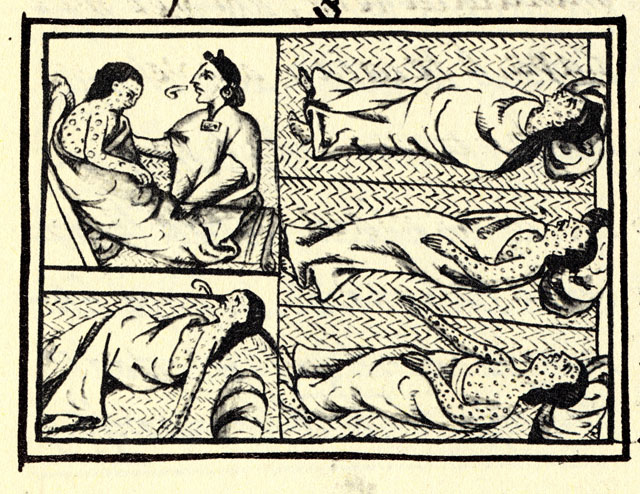
The impact of these Eurasian diseases on Native Americans was one of human history’s most abrupt and severe population disasters. Even the Black Death did not kill as large a percentage of Europeans, and when diseases recurred in Europe, they generally killed their victims over a much longer time-span due to the inherited immunity of European populations. American native populations had no such safeguards, and disease spread virulently. For example, there were over a million people living on the Caribbean island of Hispaniola in 1492 when Columbus left his 39 sailors in La Navidad. By 1548, there were only 500 natives left alive. 999,500 people had disappeared in a little over 50 years.
The populations of other Caribbean islands like Cuba were similarly wiped out. Whole societies disappeared, and this was not only a tragedy for the cultures that vanished. The reduction of native populations began a cycle of violence that became central to the history of the Americas. Once there were no natives left to work on European sugar plantations, enslaved Africans—who had a similar acquired immunity as Europeans—were considered crucial to the survival of the West Indies sugar economy.
The greater population densities of Central and South America enabled contagious diseases to spread more quickly there. Heavily-traveled roads in central Mexico actually helped spread disease beyond areas that had been reached by Spanish explorers. Cities were wiped out that had never seen a white man. The population of the Aztec heartland dropped from about 25 million on the eve of the Spanish conquest in 1519 to just under 17 million a decade later. One out of every three native people died in just ten years. After another decade the Aztec population was reduced to about 6 million. Three out of four people in the Aztec world disappeared in 20 years. Imagine writing a list of your 10 closest friends and family, and then randomly crossing off seven names. By 1580, the Aztec empire had been hollowed out to less than 2 million people, from a starting point of 25 million. Cross off two more — you’re down to one friend.
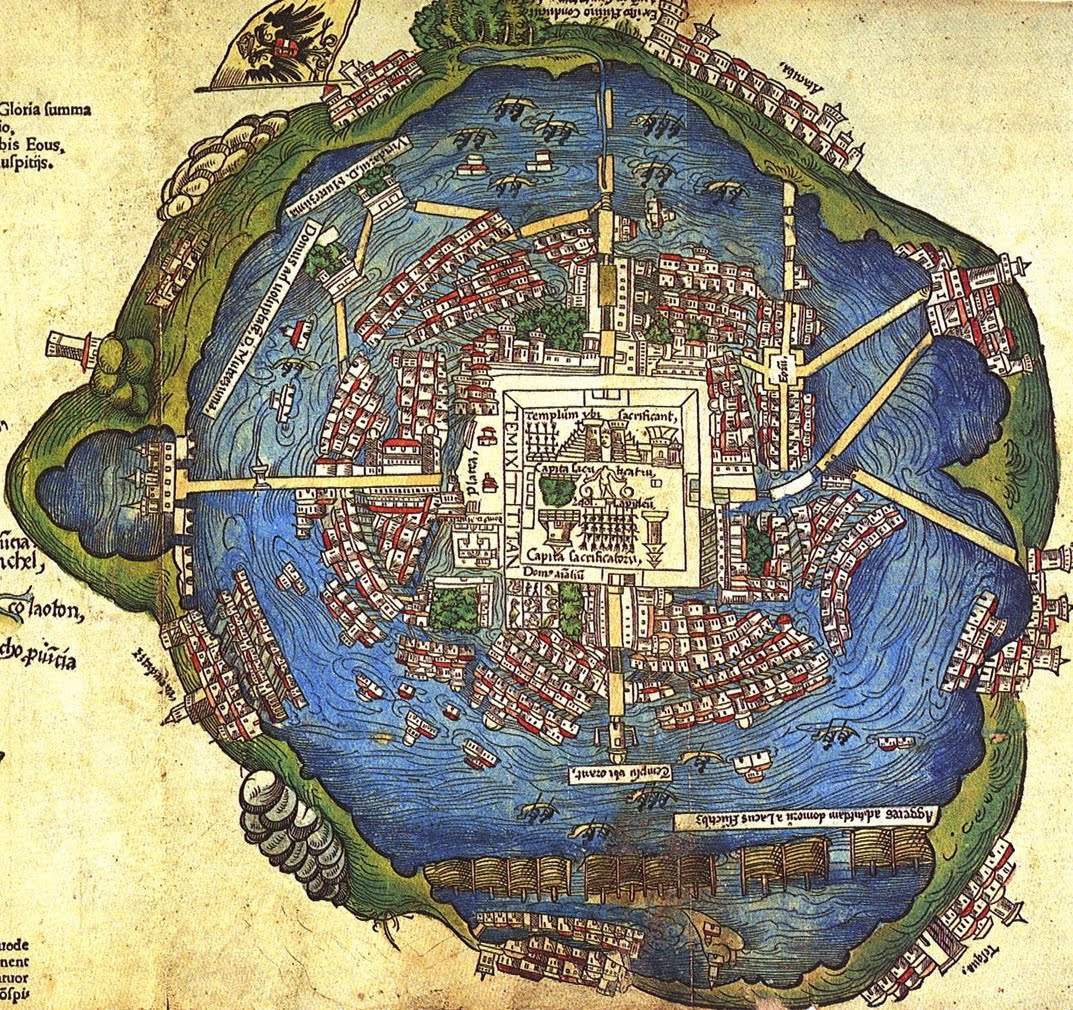
The depopulation of the Americas is one of the Earth’s most significant population disasters, both in its human toll and in the changes it brought about. Over the years, as you might expect, there has been a lot of controversy about what happened. Critics of Spanish colonialism (many of them Spanish, like the priest Bartolomé de las Casas) have accused Spaniards of atrocities in what has become known as “the Black Legend”. To defend themselves, colonialists accused the Aztec and Inca Empires with atrocities of their own and have emphasized the support conquistadors received from indigenous rivals of these empires. Textbooks often reflect some of these biases, one, for example, mentions that “Allegedly, between 20,000 and 80,000 men, women, and children were slaughtered in a single ceremony in 1487” as a sacrifice at a temple in the Aztec capital of Tenochtitlán. This claim may or may not be true, but even if it is, compare it to the deaths of over 20 million men, women, and children that followed the Spanish invasion of the Aztec lands of Central Mexico.
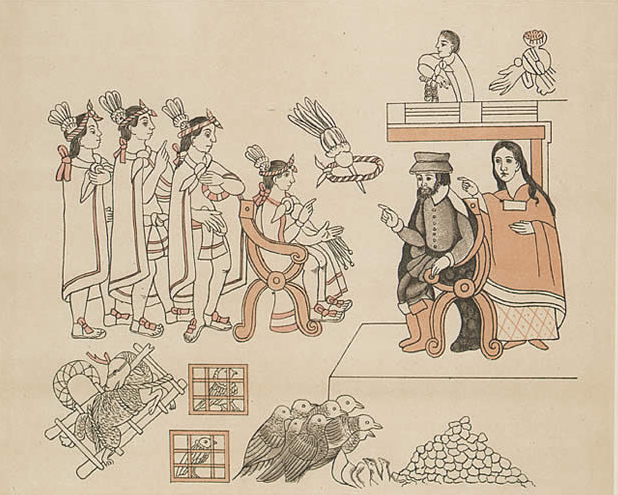
Traditional European or Eurocentric American histories of exploration often present the victory of the Spanish over the Aztec as an example of the superiority of Europeans over the savage Indians. The reality is far more complex. When Cortés explored central Mexico, he encountered a region simmering with native conflict. Far from being unified and content under Aztec rule, many peoples in Mexico resented the overlords of Tenochtitlán and were ready to rebel. Cortés was also aided by an enslaved Nahua woman, Malintzin (also known as La Malinche or Doña Marina, her Spanish name), whom the natives of Tabasco gave him as a tribute slave. In addition to speaking Nahua and Maya, Malintzin quickly learned Spanish and translated for Cortés in his dealings with Aztec emperor Moctezuma.
Malintzin also (willingly or under pressure) entered into a physical relationship with Cortés. Their son, Martín, was one of the first “mestizos” (persons of mixed indigenous American and European descent) in Spanish America. Malintzin remains a controversial figure in the history of the Atlantic World. Some view her as a traitor because she helped Cortés conquer the Aztecs, while others see her as a victim of European imperialism whose choices were very limited. In either case, she demonstrates one way in which native peoples responded to the arrival of the Spanish. Without her, Cortés would not have been able to communicate, and without the language bridge, he surely would have been less successful in destabilizing the Aztec Empire. By this and other means, native people helped shape the conquest of the Americas.

The Inca Empire in the Andes suffered the same fate. 90% of the South Americans died, and they started dying BEFORE the white invaders arrived in 1532, which caused confusion and dismay. When Pizarro crossed the Andes with eighty conquistadors, he found social chaos. Huayna Capac, the Inca leader who had triumphantly extended the empire into Chile and Ecuador, had died of smallpox in 1527. His two sons fought a brutal civil war for control of the empire, the younger son Atahualpa finally defeating and assassinating his older brother Huáscar. The civil war exacerbated the effects of epidemics, and the weakness of the reduced Inca population gave Pizarro the opportunity he needed to capture and kill Atahualpa in 1533, beginning the end of the Inca empire.
Although the conquistadors focused much of their energy on Central and South America, they brought disease to North America as well. After helping Pizarro conquer the Inca, Hernando De Soto landed an expedition in Florida in 1539 and explored territory now in the states of Georgia, South Carolina, North Carolina, Tennessee, Alabama, Mississippi, and Oklahoma. Everywhere he went, the conquistador reported the land was “thickly settled with large towns.”
De Soto didn’t stay long. He died of fever in Louisiana in 1542, and although the region was visited by a few missionaries, it was not seriously considered again by Europeans until the French aristocrat, La Salle, traveled down the Mississippi River in 1670. Where De Soto had seen fortified towns, La Salle saw none. The entire region had been emptied by the diseases which accompanied De Soto and his men, and had returned to wilderness. The French explorer reported traveling hundreds of miles without passing a single village. Historians were actually unaware until recently that the American South had once been heavily populated before the arrival of contagious Spanish explorers and missionaries.
Spanish invaders had not deliberately infected the natives with all these diseases (Europeans still had no idea at this time how viruses or bacteria worked), but they were quick to take advantage of the opportunities provided by the social chaos and military weakness of native societies in crisis. In both Mexico and Peru, the conquistadors found allies among different indigenous groups who often thought of themselves as the victors, with Spanish help, rather than the other way around. Still, within a few years, the Spaniards took over the capital cities of the Inca and Aztec empires, inserting themselves into the top positions in the pre-existing governments. Patterns of tribute were maintained, as well as the labor draft of the Inca mita—although now labor would be devoted to the silver mines and not just road, irrigation, and building projects.
As they had been in Spain during the Reconquista, conquistadors were rewarded for military service with encomiendas. From a root word meaning “entrusting,” encomiendas were grants of captured territory and the people that lived on it, who the encomendero was theoretically responsible for bringing into the Christian community. This technique had been used in Spain to keep track of conquered Muslims and make sure they did not backslide after their forced conversions. In Spanish America, there was a much greater emphasis on taxing and working the new peasants, rather than leading them to religion.
Europe
As previously mentioned, American staple crops were successfully adopted by farmers in Europe, providing better and more reliable nutrition which sparked a population boom. New foods like potatoes were so important in preventing the cyclical famines that regularly hit Europe, that they became a key topic in Adam Smith’s classic, On the Wealth of Nations. Many plant species developed by native Americans are still crucial to the world economy, including not only maize, potatoes, and cassava, but also tomatoes, sweet potatoes, cacao, chili peppers, natural rubber, tobacco, and vanilla. Quinine, a medicine made from the bark of the Peruvian cinchona tree, was effective treating malaria and helped open the African and Asian tropics to European colonization. Eurasian plants like sugar, soybeans, oranges, bananas, and rice (which probably reached America from Africa along with enslaved women who were experts growing it) were also extensively cultivated in the Americas for profitable shipment back to European markets. Exports of native and transplanted crops helped feed growing cities and, by the mid-18th century, freed agricultural workers to enter Europe’s new industries. Without inexpensive and abundant Native American foods, there might have been no Industrial Revolution.
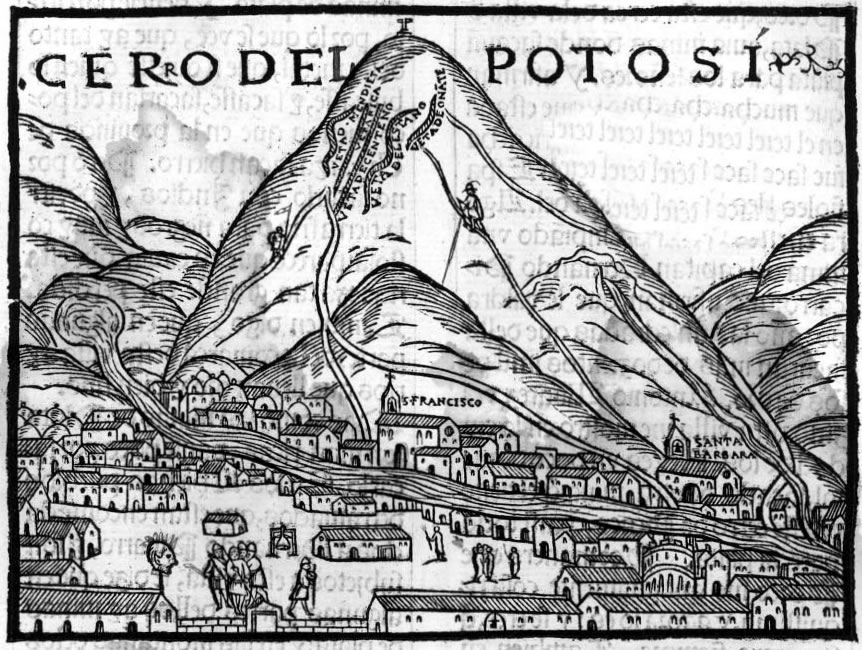
Like the Portuguese in their exploration of Africa, the Spanish were also interested in finding sources of gold and silver for the European commerce. Although they never found El Dorado, the “golden man” that expanded in legends to a city of gold, Europeans did find a fair amount of gold. And they found even more silver. For example, the Bolivian city of Potosí, located in the Andes at an elevation of 13,420 feet (over 4,000 meters), still has the largest population of any city at that altitude. Potosí was established by the Spanish in 1542 on the site of a long-standing native mining village at the foot of the Cerro Rico, which is a literal mountain of silver. Potosí has a current population of about 165,000, almost identical to the city’s population in 1660, when the high-altitude mining center was larger than Seville, Madrid, or Rome, and when the combined population of ALL European colonies in North America was only about 75,000.
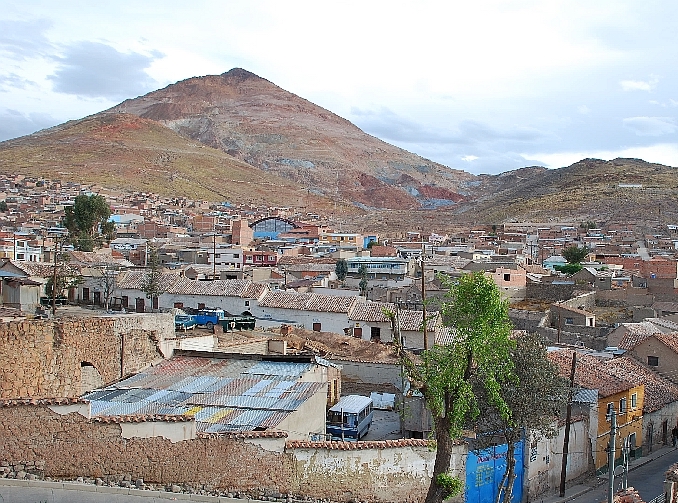
Spanish silver coins called “pieces of eight” from the Cerro Rico and from similar mines in Zacatecas, Mexico, were so plentiful that they became the international currency of Europe and much of Asia. Every year between 1566 and 1815, a treasure fleet sailed from Acapulco to Manila laden with silver for the trade in China and India. Another fleet carried not only precious metals but spices and expensive Chinese ceramics acquired in Asia from Veracruz to Spain.
Once again, products originating in the Americas were a spur to the Industrial Revolution. Without the money minted from Latin America’s silver and gold, there might have been no global commercial boom to finance European industrialization. And Potosí’s story is not over yet. Although most of the easily-extractible silver was taken out of the mountain centuries ago, the Cerro Rico is still being worked by Bolivian children whose story is told in the award-winning documentary, The Devil’s Miner, which you can view on the web if you’re interested in learning more.
Mestizos
Because most of the Spanish in the New World were male soldiers in the first decades of the conquest, women were taken, often forcibly, from native communities to be wives and mistresses. One high-ranking Inca native named Felipe Guaman Poma de Ayala wrote to the King of Spain around 1600, complaining that Spaniards are taking all the Indian women of childbearing age, so the place was being flooded with mestizos who were not required to work as the Indians were. Worse, the fathers were not supporting their illegitimate children, and “if a Spaniard steals away four Indian women to make little mestizos, he will bribe the judges and refuse to recognize his paternity,” leaving their support up to the state. “Spaniards ought to live like Christians,” Guaman argued, “marrying ladies of equal status and leaving the poor Indian women alone so they can have Indian children.”
Most of the countries of Latin America are built on mixed or mestizo populations; so much so that in the 1700s, the colonists tried to make distinctions between all the various types of people they believed made up their societies, to “prove” to the Spanish Crown that a logical caste system existed in the colonies. Although these distinctions were somewhat arbitrary and were often used to uphold the power of the group at the top, in the long run many of these mixed Euro-American populations have developed strong ethnic identities. A similar process happened in New France–today’s Quebec in Canada. There were only about twenty-five hundred French people in the province by 1663. Most of them were voyageurs, fur traders who went into the northern forests to make their fortunes. Voyageurs frequently married local Indian women, and their Canadian descendants are now recognized as a distinct ethno-cultural group called Métis.
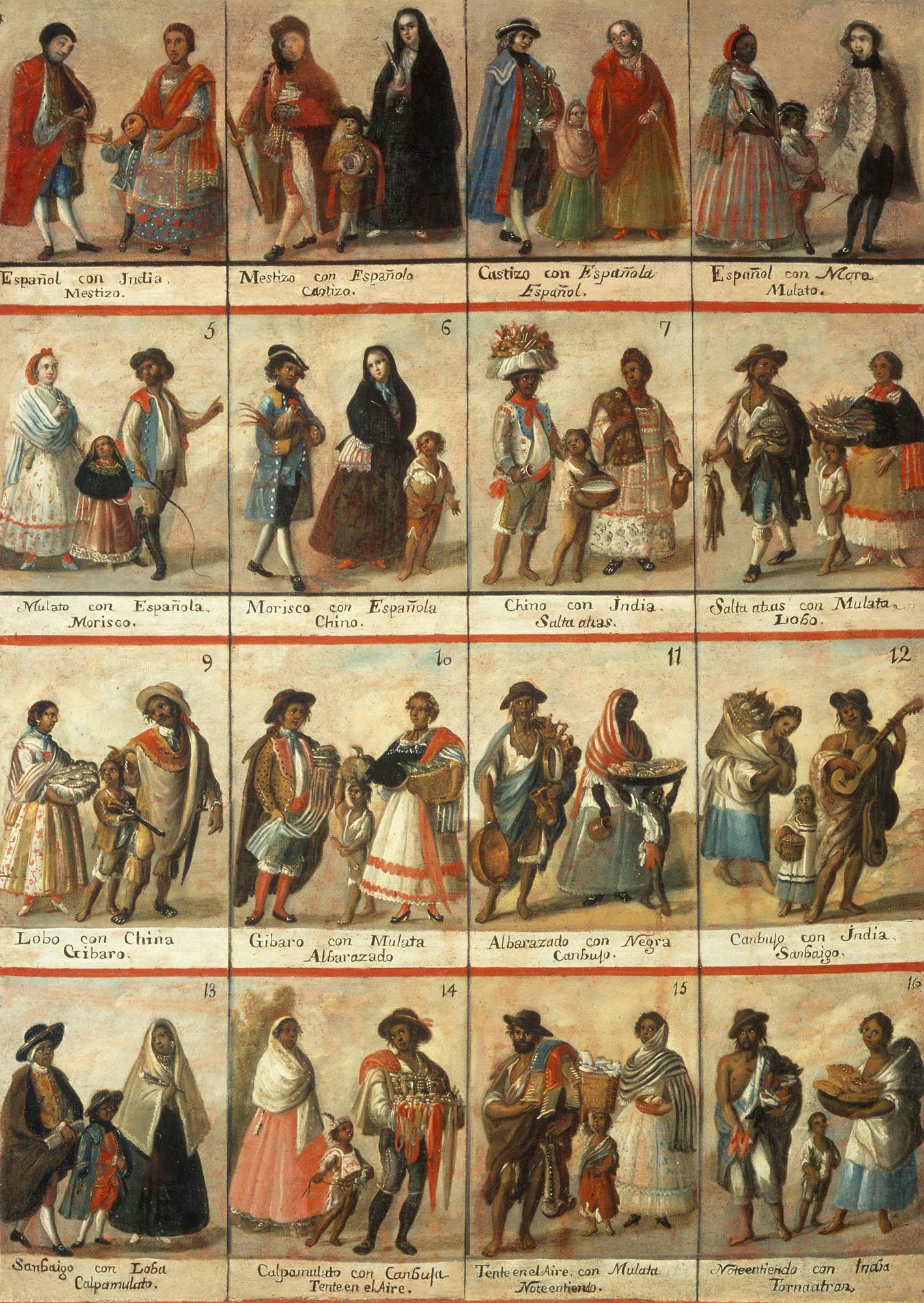
The social caste system developed in Latin America was based on both blood and origin. At the top were peninsulares, Spaniards born in Spain (on the Iberian Peninsula), who were appointed to nearly all of the important administrative positions in the government and to the highest clerical offices (archbishops and bishops). Next were criollos (creoles), Spaniards born in the colonies. They made up the landed elite, often descendants of the original encomenderos, and were the vast majority of the merchant class and some of the higher clergy. Beneath them were mestizos, people of mixed race, who worked as artisans and in the lower clergy, or farmed their own small holdings or the estates of criollo landowners. Indians were below mestizos, and although they often managed their own communities (under supervision of missionary priests), tribute and labor obligations required them to work in the wage economy managed by the Spanish. Later, when the colonists started importing African slaves, new designations like mulatto and zambo were developed to describe children of black-white and black-Indian unions. These new “mixed” populations often played the same role in the economy and society as mestizos, although they were located closer to the sugar-growing regions to which enslaved Africans were initially brought.
The Portuguese were initially more interested in dominating trade routes in the Indian Ocean, so they mostly ignored their new possession in Brazil until French Huguenots—protestant Christians fleeing Catholic France—tried to establish a colony near present-day Rio de Janeiro in the mid-1500s. By that time, the Portuguese had watched the Spanish become successful cultivating sugar cane in the Caribbean. Sugar, which the Spanish and Portuguese had learned how to grow and process in the Middle East during the Crusades, was already grown with enslaved African labor on profitable plantations in Portugal’s island colonies off the African coast. Portuguese entrepreneurs brought cane and slaves to Brazil and set up plantations along the northern coast. By this time, the Catholic Church had prohibited the enslavement of Indians, but not of Africans. Native Brazilians did not establish the complex societies found in Mexico, Central America, and Andean South America, so it was actually harder to “conquer” them, as they escaped deeper into the interior jungles and forests. However, the Portuguese already had established colonies and trade ties in Africa, which soon supplied enslaved labor to the sugar plantations.

As described in the previous chapter, slavery was a traditional element in all world societies, including those of Africa, but Europeans quickly grasped the usefulness of having enslaved Africans in European communities because it would be harder for them to blend in with the local population. The sugar trade spurred the slave trade, as well as European notions of racial superiority to justify the enslavement of people with darker skins.
By the mid-1500s in Europe, Spanish wealth began to cause problems. Wealthy Spanish nobles married into aristocratic families like the Austrian Hapsburgs. In 1519 (the same year Cortés attacked Tenochtitlán and Magellan set out to circle the Earth) the grandson of Ferdinand and Isabella, Charles V, became Holy Roman Emperor. Charles was also King of Spain and (by marriage) Portugal, which gave him legal control of all the American colonies. When his wife Isabella died in 1555, Charles was inconsolable. He abdicated in 1556 and retired to a monastery, leaving his younger brother Ferdinand in charge of the Holy Roman Empire in Europe and his son Philip II in control of Spain, Portugal, and their possessions (including the “Spanish Netherlands” on the European coast).
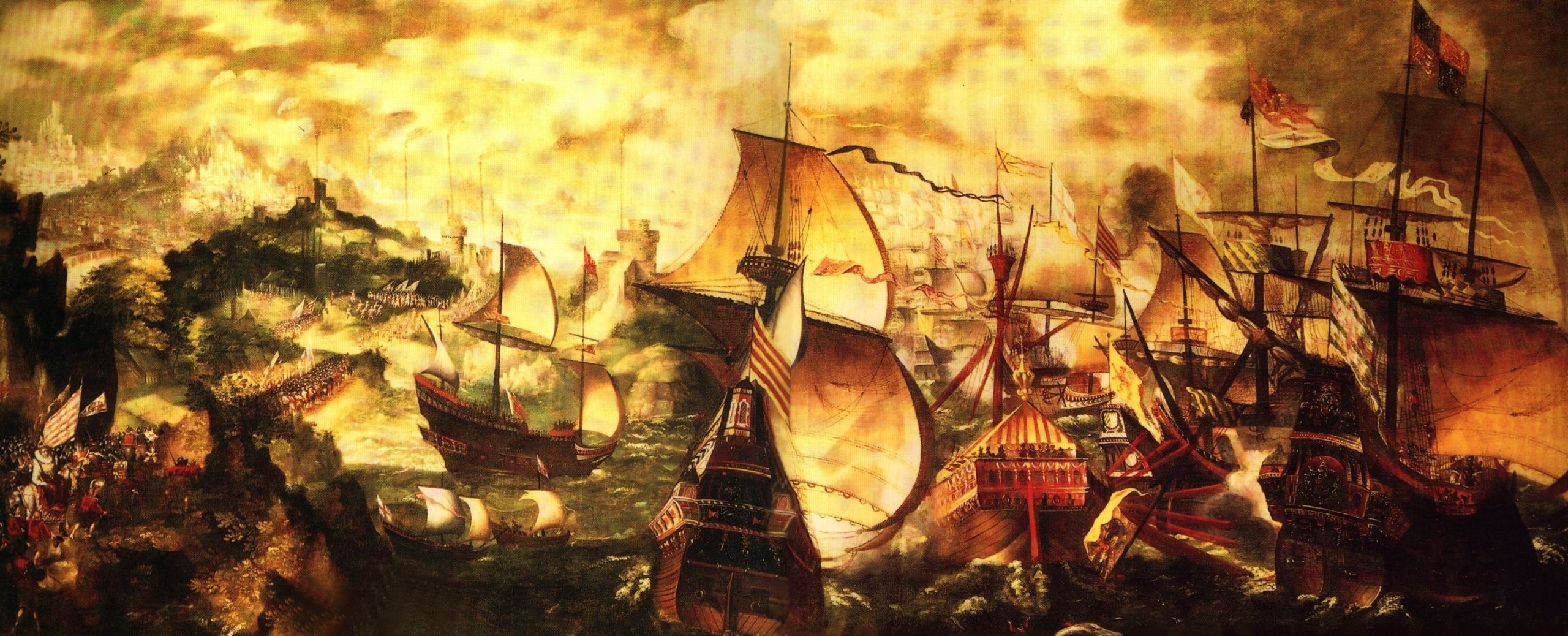
Although Philip II was called “The Prudent,” and was also briefly King of England while married to Queen (Bloody) Mary, after she died in 1558, he lost control of the rebellious Protestant Dutch Republic and Spain declared bankruptcy five times. Spain’s financial troubles were partly due to debts Philip’s father Charles V had accumulated as Holy Roman Emperor. After Queen Mary’s death, Philip proposed to her successor, Elizabeth I, who turned him down. Elizabeth’s father, King Henry VIII, had separated the Church of England from Rome in the 1530s, after a dispute with the Pope over the annulment of his marriage to Catherine of Aragon, daughter of Ferdinand and Isabella and aunt to Charles V. Philip supported the claim of Mary Queen of Scots to the British throne, but when she was executed in 1587, Philip decided to invade and return England to Catholicism.
In 1588, the Spanish Armada organized by Philip was hampered by bad weather on the English Channel and then defeated by the British Royal Navy, which lost no ships while Spain lost five before withdrawing. During the retreat, most of the Spanish navy was destroyed by storms, leaving the British and the Dutch in control of the Atlantic. Later that year an English fleet sailed into the harbor at Cadiz, burned 200 Spanish ships and made off with the annual silver shipment. It was the beginning of the end of the Spanish Empire as a major European power.
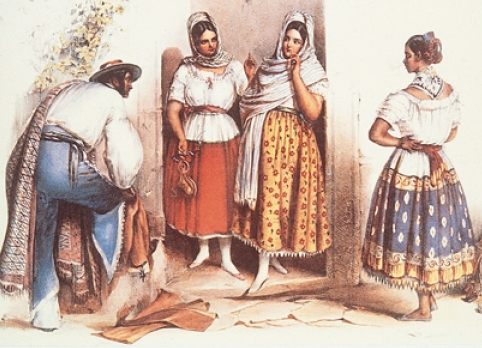
Another reason Spain did not permanently dominate the European economy was that for centuries most of the silver they shipped from Peru and Mexico ended up in China, where silver was the basis of the earth’s largest economy. Buoyed by China’s economic dominance, the Asian population increased from 60% of the world’s people to 67% between 1500 and 1800. In addition to the Mings in China, the Mughals in India ruled an empire of 150 million people, and they were very interested in expanding trade with the West. India was also highly productive; between the two empires, Asia produced 80% of all the world’s goods. Even though we are concentrating in this chapter on the intricacies of the Atlantic World and the intersection of Africa, Europe, and the Americas, until the mid-1700s, it is important to remember that China and India dominated world commerce and industry.
Chinese silks and Indian cotton were the world’s best quality and lowest-cost textiles, and clothes made from them were worn throughout the world – even in Spain’s colonies where the law required people to trade only with the home country. The national costume of Mexico is called the China Poblana; it was originally a contraband silk dress worn by women of the towns. The British were so intimidated by Asian textiles that they imposed tariffs to try to protect their own weavers from being driven out of the business. Mercantilism, in which colonies served the home country as both a market and a source of raw materials in a closed economy, was actually not a primitive economic system that evolved into free market capitalism – it was an attempt to shield British and European merchants from an already-existing international free market in which they were too often the losers to the dominant Asian powers.
Media Attributions
- Picture2
- Chichen_Itza_3
- San_Lorenzo_Monument_3
- Lake_Texcoco_c_1519
- Intikawan_Amantani
- MachuPicchu_Residential_(pixinn.net)
- Old Greenland
- OLYMPUS DIGITAL CAMERA
- 2880px-Viajes_de_colon_en.svg
- CantinoPlanisphere
- FlorentineCodex_BK12_F54_smallpox
- Tenochtitlan_y_Golfo_de_Mexico_1524
- Cortez__La_Malinche
- 1920px-Inca_roads-en.svg
- Capitulo-CIX
- Potosi_Mining_Photo_by_Sascha_Grabow
- Casta_painting_all
- Poblanas
